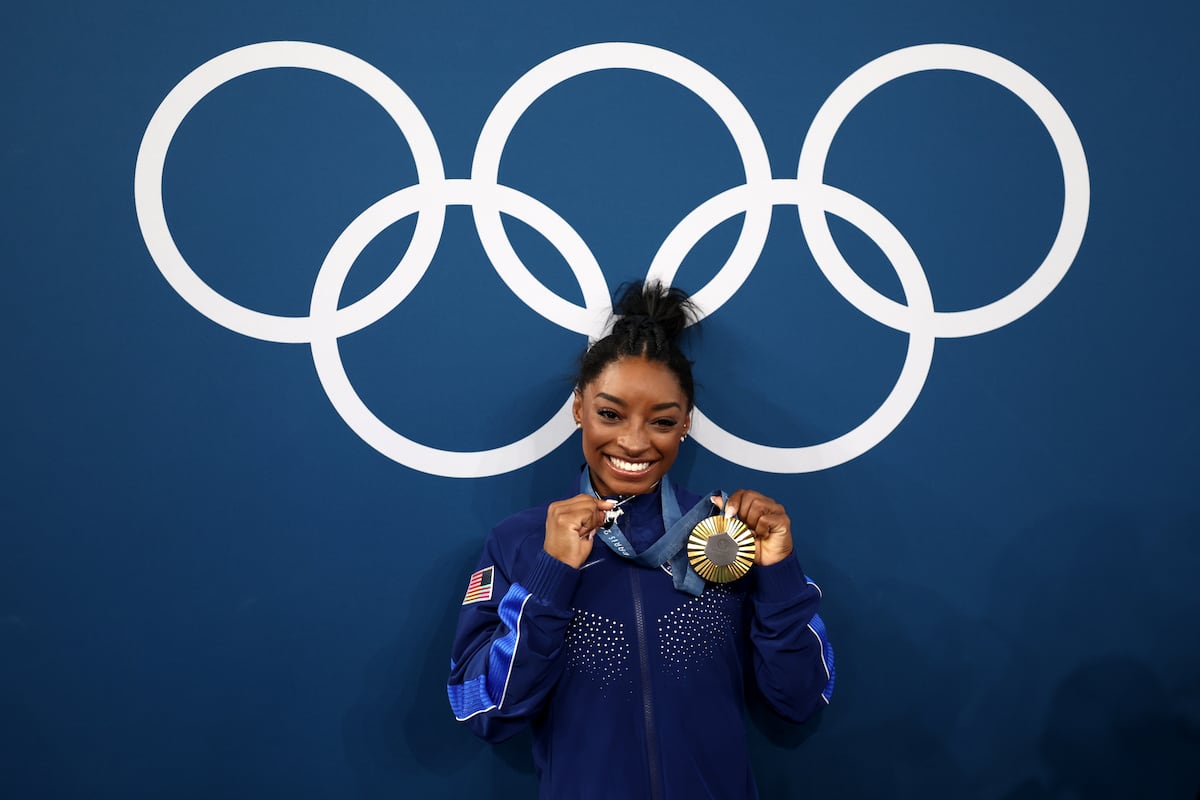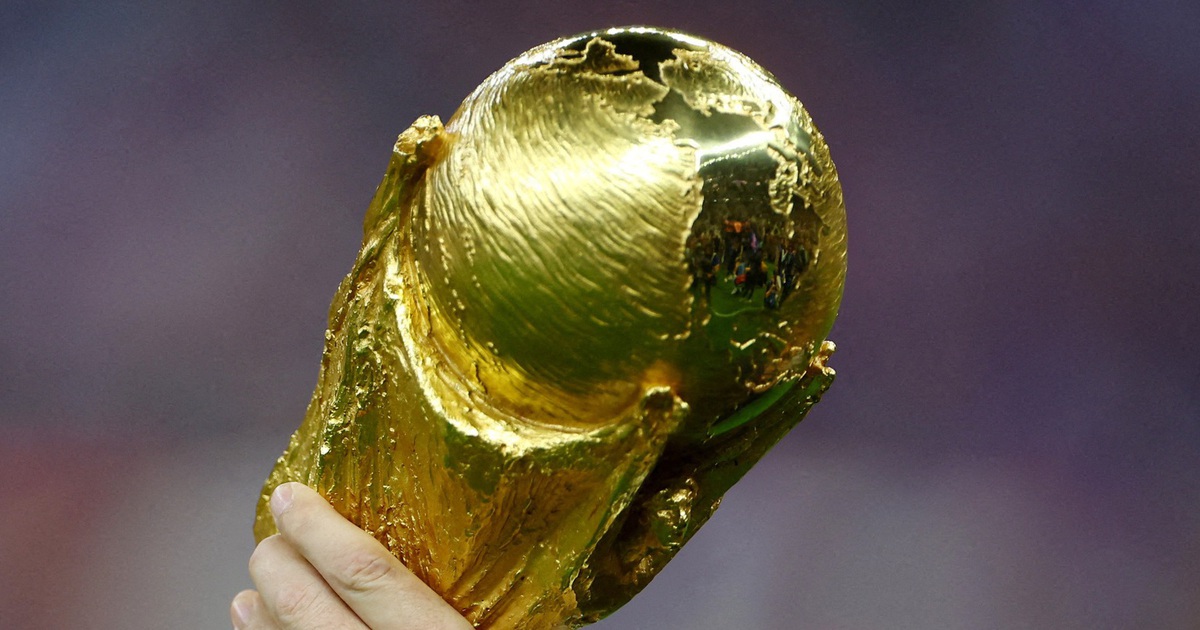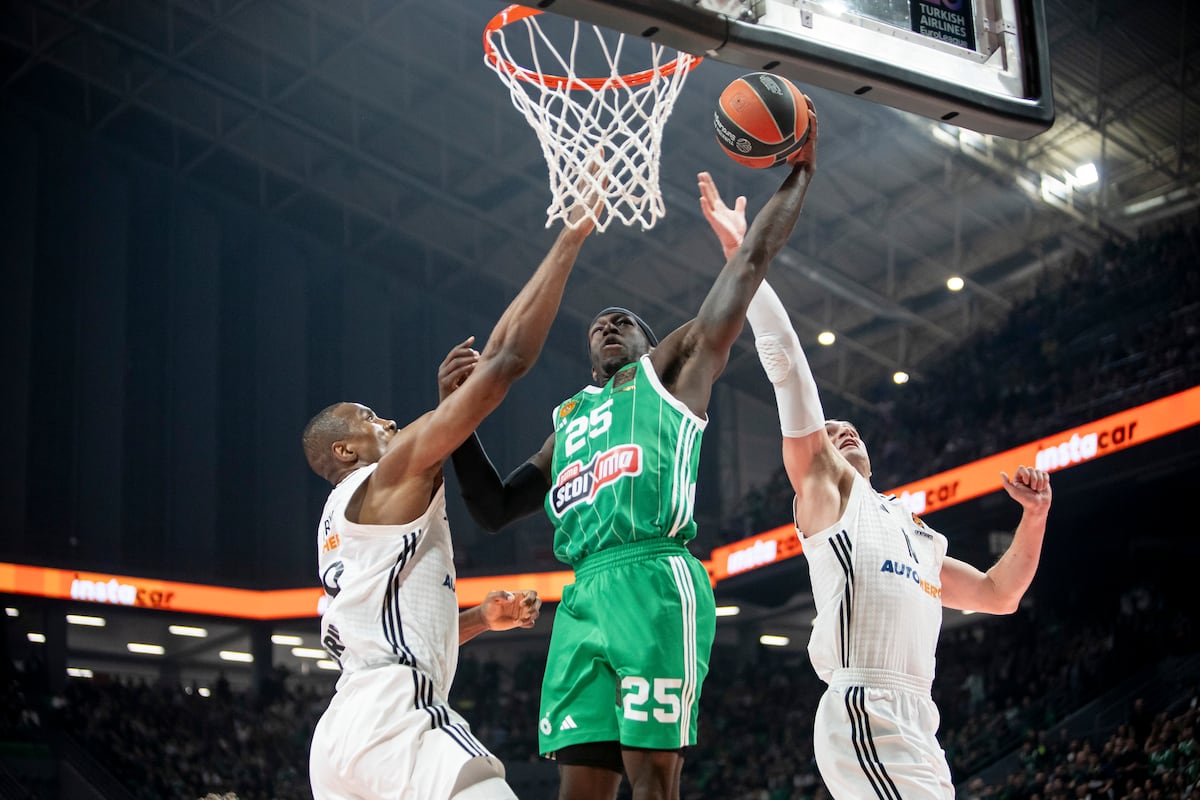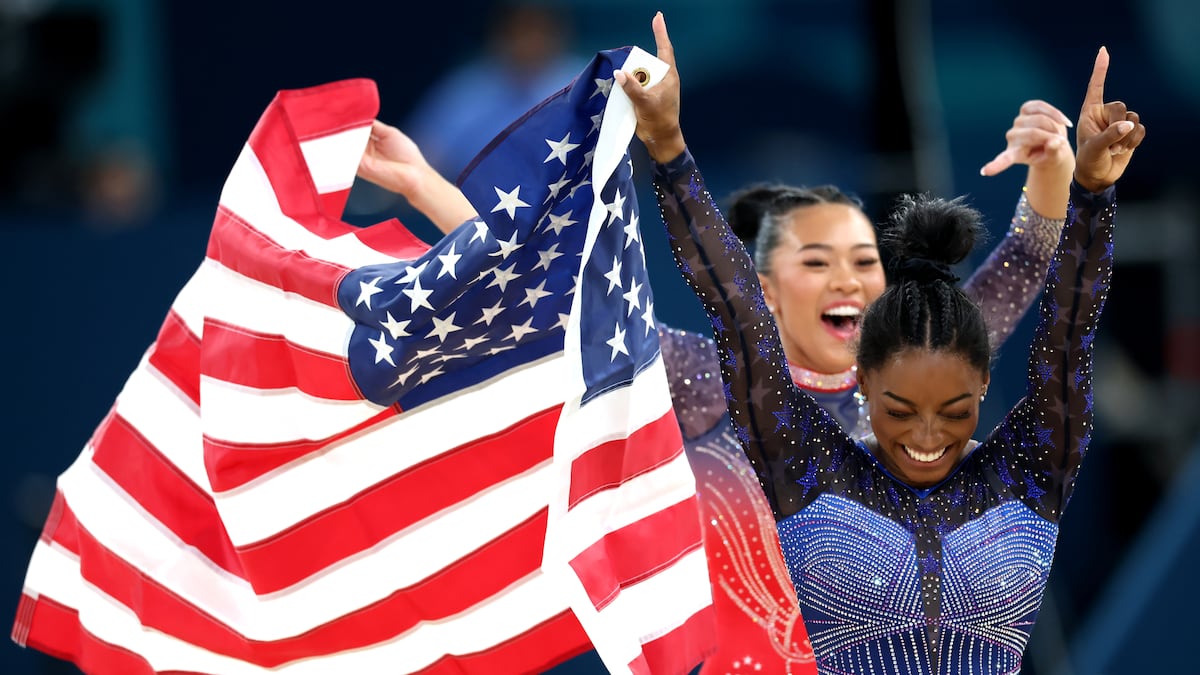Paris, like the world, revolves around Simone Biles, who turns the Games into a film, each competition into a chapter of her life, and she revolves around 80 worlds, and everyone loves her.
Nadia Comaneci, the greatest gymnast in history at the time, at six o’clock in the evening in a stormy Paris, leans out from a corner of the centre court with a baton in her hand and taps the floor three times, the three ritual blows with which each final competition at the Games begins. “We are all here to see the wonderful Simone Biles, of course,” she proclaimed a few minutes earlier. “Yes, I have nine Olympic medals and she has eight, but I think she will overtake me.”
Two hours later, the Simone Biles who is so typical of Parisian sunsets, laughing more than smiling, uncontrollable joy, cannot help but show the camera the figure hanging from the chain around her neck, a goat, no less. Goat (greatest of all time), The best ever, she announces. She proclaims it. She has just won the ninth Olympic medal of her life, she has just been proclaimed Olympic champion for the second time in the all-around competition, the event that over the four elements of women’s gymnastics (pommel, uneven bars, balance beam and floor) elects the queen of gymnastics. These are her third Games. She is 27 years old. She has won the overall title twice, first in Rio 2016. “It’s been eight years,” she says afterwards, laughing. “It’s incredible. I was a bit naive in the process. So I appreciate my craft a bit more.” Only two gymnasts in Olympic history had achieved this: the Soviet Larisa Latynina, in 1956 and 1960, and the Czech Vera Caslavska (1964 and 1968).
And, although she could, despite the bandage on her left calf, she does not do one more somersault to get on the podium to the applause of Thomas Bach, the president of the International Olympic Committee (IOC), who congratulates her with a long speech without letting go of her hand. In the stands, Stephen Curry, the star of the dream teamhe records everything with his cell phone.
Just hours before she hung her sixth Olympic gold medal around her neck, next to the diamond-encrusted goat, Biles had attended a therapy session. On Saturday and Monday, she will add to her tally and tie Comaneci in the three apparatus competitions she will compete in: vault, beam and floor. “I am ecstatic with my performance tonight. And I still have three finals left,” she says afterwards. “Now it’s time to have fun. The hard part is over.”
Comaneci was 14 when she won her ten in Montreal 76 and 18 when she extended her harvest in Moscow 80. “By making history I realized that I broke a lot of barriers for women,” adds the Romanian, the gymnast who personifies more than anyone the era of young athletes subject to the bad temper of their coaches, because that made them stronger within their fragility. Biles is 27 years old. She is married. She has coaches who seem more like her older brothers and do not touch her personality. Biles has taken gymnastics to adulthood, and with her her teammates to the podium. The silver medal went to Brazilian Rebeca Andrade, 25, also runner-up in Tokyo, who forced her to risk and burst the seams of perfection in the explosive and mature final floor exercise, Taylor Swift and all that, Beyoncé and dancing and symbolic punches in the air, and also four impossible diagonals of height, speed and power, and even the grace that only those who feel powerful can transmit, triple double somersault, full front to double double, double with half turn and double. Third, bronze, was her compatriot Sunisa Lee, 21, the Olympic champion at 18 when she was absent from most of the Tokyo competitions due to mental therapy. Never before had the three women on the podium of the all-around competition won medals in previous Games.
Behind them, the future, the Italian Alice d’Amato, 21 years old, fourth, and the Algerian Kaylia Nemour, 17, wonderful, sober, elegant, and sad.
Biles’ victory was written and the ecstasy on the Bercy pyramid was anticipated, but the road was hard, which makes the triumph even more valuable. “I think Rebecca pushes me to give my best. She is a phenomenal athlete and gymnast. So I’m glad she was there to push me,” says Biles and Andrade sighs. She is the best gymnast who is not called Simone Biles, as the world repeats daily, and she regrets her coincidence with the star from Texas, otherwise she would be the queen. It was an even fight from the vault, the initial flight. The Brazilian began hitting with a perfect cheng (roundoff plus half turn to enter the platform facing forward and a somersault in a plank with a pirouette and a half), straight legs and together where so many other gymnasts have separations and bent knees. Although it was less difficult than Biles II (the Yurchenko double somersault with a pike that reached the sky high) with which the champion responded, the magnificent execution (in Cheng’s things, Andrade is the best) earned her a score of 15.1, which dwarfed Biles’ 15.766.
The uneven bars, the apparatus whose material evolution from its beginnings as a mere variation on the men’s parallel bars — the symbolic diagonal separating the two bars — best symbolizes the emancipation of women’s gymnastics, is ironically, or perhaps naturally because of its treacherous nature, the place where Biles hesitates the most. One major mistake on the bars: She botched a transition from the high bar to the low bar, bent her legs to avoid touching the floor and had to do an extra twist to compensate. “Oh my God. I’ve done a lot of numbers on the bars. So it was an unfortunate mistake, but I knew I had to keep pushing and not give up,” she says. “And that’s exactly what was out there.”
Andrade is first. The bar and the floor remain. The bar, destiny written on a 10-centimeter-wide board on which one dances, suffers, anguishes, and jumps. Biles is first. She staggers slightly in a triple wolf turn (on one leg bent with the other extended) but minimizes both to small deductions). Very serious Simone. Rebeca smiles and then also hesitates, ouch, ouch, ouch: her left leg rises after a backflip. And that small detail makes the difference. Biles regains her head. And on the floor everything explodes. All her worlds. The 80s.
You can follow Morning Express Sports on Facebook and Xor sign up here to receive the Daily newsletter of the Paris Olympic Games.









